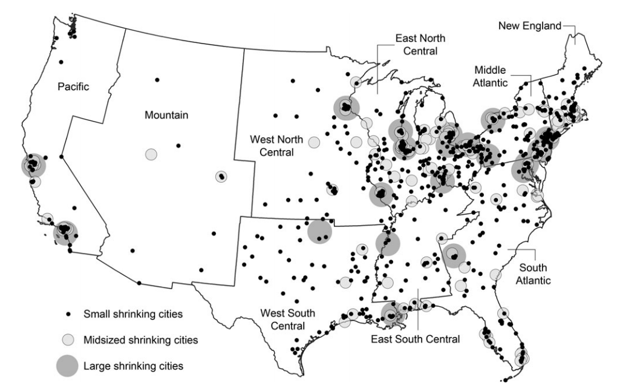Memphis Mayor Jim Strickland weekly Friday email two weeks ago was a shocker.
Week after week, he’s talked over and over about crime, his frustration with it, his belief that more police are the answer to it, his “get tough on crime” sentencing proposals, and his broadsides about juvenile crime.
That’s why it was a stunner when he wrote that “population loss has been our number one challenge.”
For the cynical pundits among us, the statement was about creating a distraction from the deep concerns about crime. For others, with city elections 13 months away, it was about building a legacy that’s not centered on crimefighting strategies that have failed to reduce the crime rate.
This is after all the time when the clock winds down on terms of office when mayors start to concentrate on how they will be remembered and how they can shape.
Bragging Rights
While the mayor has significant bragging rights like city government’s financial stability, the $200 million Accelerate Memphis program, the new youth sports center at Liberty Park, the new Leftwich Tennis Center at Audubon Park, the improved convention center, and the exciting, new riverfront that will brand the city as innovative and forward-thinking, the risk to his term is that all of this will be overshadowed by a climbing violent crime rate that defies all solutions.
In fact, his consistent concentration on crime to this point is a factor why crime is top of mind by Memphians – and possibly why historians will focus on it as they some day in the future assess his administration.
But I digress. The mayor’s legacy is a topic for fuller commentary on another day. This post is about his comments that population growth is Memphis’ top challenge. It’s also about how population growth often serves as a proxy for economic growth with elected officials.
Memphis’ Census Appeal
City Hall was upset when the 2020 Census placed the population of Memphis at 633,104, a decline of 13,785 over 2010.
As a result, the Strickland Administration launched a process to prove an undercount and to file an appeal with the Census Bureau for a review of the 2020 population count. Successful appeals are extremely rare – some place them at 2% – but city government loses nothing by trying to get a revision.
Mayor Strickland’s contention is that the census-takers missed 15,895 people and the accurate population of Memphis is 648,999, a modest 2,110 increase over 2010 Census, but an increase nevertheless.
Even when an appeal is successful, the Census Bureau rarely accepts the number submitted by cities. Because of the political interference from the Trump Administration in the Census, this year may have a record number of appeals from cities of all sizes across the U.S. and there is some idea that the Census Bureau realizes that there are troubling undercounts.
Already, there has been research indicating that Hispanics particularly have been undercounted. As for Memphis, the 2020 census showed only a 0.9% increase of Hispanics over 2020, and while it is anecdotal, it appears to be a place where the census takers got it wrong.
What It Will Take
Memphis disguised its population loss from 1970 to the present with aggressive annexations (15 since 1998 alone) and because of it, the population was essentially steady:
1980 – 646,174
1990 – 610,337
2000 – 650,100
2010 – 646,889
2020 – 633,104
As an indication of the difficulty of an appeal that accepts the city’s increase of 15,895, the Census Bureau continued to show a population loss for its estimated count 2021. Its estimated population for Memphis is 628,127, down almost 5,000 from the 2020 count.
Whatever happens with the appeal, Memphis will likely be in a hole as it moves toward the 2030 Census. It’s hard to imagine that at its best, the population of Memphis in 2030 will not have fallen.
For the population to remain the same as today, City of Memphis not only needs to win its appeal, but it will need to increase the population enough to replace the 11,000 people who will no longer be included in Memphis’ population because of the seven deannexations approved by city government.
And with all of that, keep in mind that population growth in our community has been births over deaths for decades.
White and Middle Class Flight
In truth, without annexation, Memphis has been a shrinking city since 1970. In the following 30 years, 170,000 people – the population of Chattanooga – moved out of the 1970 city limits of Memphis. In its way, Memphis was annexing as the only way it had to chase its former population – and taxpayers – as they moved east, motivated partly by annexation of Whitehaven in 1969 and Raleigh in 1972.
It began as white flight incentivized by Shelby County Government’s spending outside Memphis that took it to the brink of insolvency. The population of the eastern suburban cities swelled.
White flight was followed by middle class flight. Memphis was a leader in U.S. cities for the percentage of lost middle class residents toward the close of the 20th century. In the decade between 2000-2010, the number of African Americans in DeSoto County doubled and today stands at 33% in a county that was for decades a White bastion.
Because of the blackmail of the Tennessee Legislature, Memphis has no realistic way to annex people to prop up its population in the future. It will now be about having more people born than people dying and attracting people to move into the city.
THE Question
It’s a tall order. The question is this: if Memphis population doesn’t increase, is it the same as saying Memphis has negative economic growth?
It’s not a given, because there are other cities losing population that remain economically strong. It requires innovative planning and strategies based on the reality that we should accept a future defined by finite assets in a smaller city.
But, in the meantime, at least for the last year and a quarter of the Strickland Administration, we’re hopeful that we won’t be distracted by the notion that more than anything, it is population growth that matters most.
Here’s a blog post from November 26, 2018:
“Most U.S. cities have acted on the article of faith that population growth is in and of itself beneficial and that the faster the growth, the greater are the economic benefits, and larger population is hailed as the cure for cities’ ailments, particularly when it comes to the need for local jobs.
“And yet, when Eben Fodor, a consultant on land planning and growth management, looked at the 100 largest U.S. metros from 2000-2009, he used the annual population growth rate and compared it to the unemployment rate, per capita income, and poverty rate. He concluded that the conventional wisdom that growth generates economic and employment benefits was not supported by these data.”
All of this is a discussion worth having in Memphis, because of our community’s habit of using an issue – think consolidation – that seems to paralyze us from taking the kind of bold actions that we need to address problems that are structural in nature. For many years, we said that the presence of both city and county governments was what prevented Memphis from taking its place among the country’s most successful cities, ignoring the fact that 99% of major cities had the same similar government structure as ours.
Well-known American urban studies theorist Richard Florida, whose books introduced the concept of the creative class (and whose first application of his research applied to Memphis), continues to suggest that population decline is not the kiss of death for cities. Considering that our demographic trend lines suggest that it may be optimistic to assume Memphis’ population loss is going to turn around, it’s a position worth discussing….just in case.
How Some Shrinking Cities Are Still Prospering
The phrase “shrinking cities” conjures up images of economically ravaged places, defined by declining populations and massive job loss. A USA Today report earlier this year listed declining Rustbelt cities like Johnstown, Pennsylvania; Youngstown, Ohio; and Pine Bluff, Arkansas as among America’s 25 fastest-shrinking cities. These places not only suffered from massive population loss, but high rates of unemployment and violent crime.
But a new study suggests that shrinking population and economic decline don’t always come hand-in-hand: A striking subset of cities with declining populations are in fact economically prosperous. The report by Maxwell Hartt at Cardiff University examines the economic performance of American cities with shrinking populations, looking at their performance on indices of income, unemployment, job growth, and economic inequality from 1980 to 2010.
Other studies have found that more than 40 percent of U.S. cities (those with at least 10,000 residents) qualify as shrinking cities, having lost population between 1980 and 2010. But Hartt estimates the real number is closer to 35 percent, or 886 cities, because he disqualifies cities which saw their land areas or census boundaries redrawn and decrease.
The map below, from the study, charts all 886 shrinking cities. The Rustbelt has large numbers of them, along with the Sunbelt and the Northeast. Less than a fifth of shrinking cities are principal cities (cities that are the largest incorporated place in a core-based statistical area or meet a threshold both for population and working population). Eighty percent of them are suburbs or smaller communities.
(Annals of the American Association of Geographers)
In the next map, Hartt charts the location of prosperous shrinking cities. Overall, Hartt finds that more than a quarter of shrinking cities (27 percent) can be defined as prosperous, having economic indices—the four factors mentioned earlier—greater than their regional average. Just 4 percent of prosperous shrinking cities are principal cities; the vast majority are suburbs and smaller places. For example, the affluent suburb of Mountain Brook, Alabama, has faced population decrease while maintaining high income and talent levels.
(Annals of the American Association of Geographers)
Not surprisingly, a relatively large percentage of prosperous shrinking cities are clustered near large, successful metros like New York, San Francisco, Chicago, and Miami. Over 30 percent of the shrinking cities in the Pacific, Mountain, Middle Atlantic, and New England census divisions are prosperous, whereas those in the West North Central and West South Central divisions were least likely to be prosperous, only about 11 to 12 percent.
In Hartt’s words, “the absolute number of prosperous shrinking cities appears to be relatively proportional to the number of shrinking cities. The relative proportionality suggests that prosperous shrinking cities might be a consistent subset of shrinking cities, rather than a geographically distinct phenomenon.”
The study found no connection between the prosperity of cities and either the size of their population or the severity of population loss. “Remarkably, the severity of shrinkage was found to have no effect on income,” Harrt writes. “The lack of relationship between severity, persistence, and income demonstrates the diversity and complexity of urban shrinkage processes.”
The researchers find that the main thing that distinguishes prosperous shrinking cities from a solely shrinking city is a particular type of talent. The strongest factor is college grads: 97 percent of prosperous shrinking cities had a higher proportion of college-educated individuals than their regional average.
This reflects the ongoing march of what Bill Bishop long ago dubbed the “big sort.” It’s not just that places are losing or gaining people in general. They’re specifically losing less-educated people while gaining more-educated people, a sorting process often exacerbated by expensive housing. Population growth is a crude measure of prosperity: As long as a place attracts or retains specific talent, it can lose general population and still be prosperous.
As a result, prosperous shrinking cities are also more unequal. More prosperous cities, even when they are losing people, have both greater levels of education and greater levels of inequality.
Of course, population loss and economic decline do inherently affect each other. Population loss can result in decreased tax revenues from income tax or real estate. This reduced fiscal capacity may result in fewer or poorer social services, resulting in even more population loss, dubbed the “feedback cycle of shrinkage.” Cities can break the shrinkage cycle by “planning for less”—diminishing the supply of housing or municipal expenditures in order to match city infrastructure with its population without excess.
The fact of shrinking, or losing population, does not condemn cities to economic decline in and of itself. More than a third of America’s shrinking cities are still economically successful by acting as talent magnets. And like other winner cities, they too suffer from the same new urban crisis brought on by their success.
**
Join us at the Smart City Memphis Facebook page for daily articles, reports, and commentaries that are relevant to Memphis.






